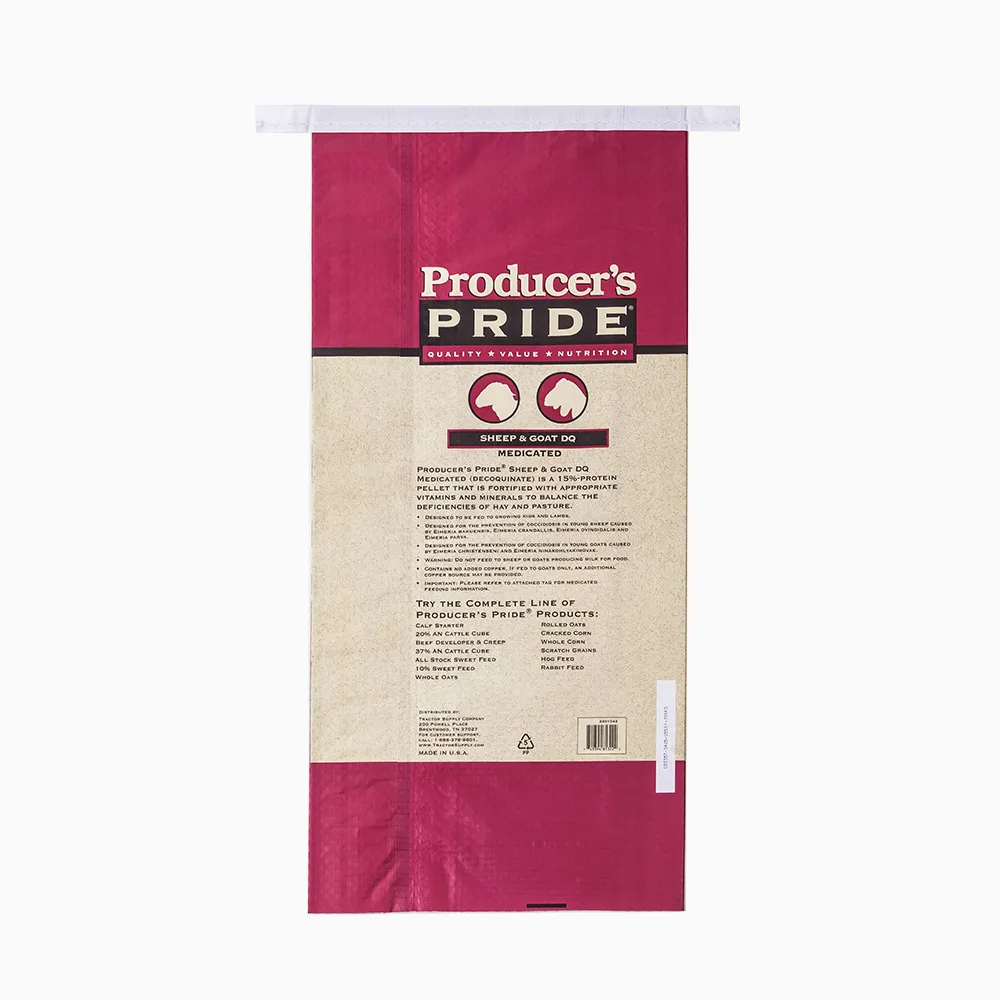
Introduction: The Critical Role of Leak-Proof Packaging
Chemical powders like titanium dioxide, calcium titanate, and sodium carbonate demand robust packaging solutions to prevent leakage during storage and transport. Kraft Paper PP Bags and Kraft Paper Woven Bags have emerged as industry leaders due to their structural integrity and compliance with global standards. The primary solutions to prevent leakage include laminated outer layers, internal liners, enhanced weaving density, and advanced sealing technologies.
Expert Insight:
Q: Why are laminated woven bags preferred for chemical powders?
**A: Lamination with polypropylene (PP) or polyethylene (PE) films adds impermeability, while woven fabric provides tear resistance. For example, a 2023 study by the European Chemical Industry Council found that laminated *Kraft Paper PP Bags* reduced leakage incidents by 92% compared to non-laminated alternatives.**
1. Structural Innovations in Leak Prevention
1.1 Outer Lamination: Barrier Against Environmental Contaminants
Outer lamination using PP or PE films creates a moisture-resistant barrier. For instance, Kraft Paper Woven Bags laminated with PP (as seen in Kraft Paper Bags laminated with woven fabric) block humidity, critical for hygroscopic powders like silica gel. The Australian Standard AS 2070-2022 mandates a minimum lamination thickness of 25μm for chemical packaging.
Case Study: A Chinese manufacturer of titanium dioxide reported zero moisture-related spoilage after switching to PP-laminated woven bags with 30μm coatings.
1.2 Internal Liners: Secondary Containment
Adding PE inner liners (15–20μm thick) ensures fine particles (<50 microns) remain contained. Paper Valve Woven Bags often integrate liners with heat-sealed seams, aligning with U.S. FDA 21 CFR 177.1520 for food-grade materials.
Example: A U.S.-based latex powder supplier reduced product loss by 40% using Kraft Paper Woven Bags with PE liners.
1.3 Weaving Density: Enhancing Fabric Integrity
Higher weaving density (12×12 to 14×14 threads per inch) minimizes pore size. Japanese Industrial Standard JIS Z 1533 requires ≥120 g/m² fabric density for hazardous materials.
Technical Insight: Kraft Paper PP Sacks with 14×14 weaving density prevented zinc sulfate leakage (<100-micron particles) in a 2023 pilot by a South Korean chemical firm.
1.4 Sealing Technologies: Precision Closure
Ultrasonic sealing and valve designs (e.g., Paper Valve Woven Bags) eliminate gaps. The EU’s EN 15512:2020 mandates double-stitched seams with a 10% overlap for powdered chemicals.
Industry Example: A German calcium carbonate producer achieved 99.8% leak-free shipments using ultrasonic-sealed Kraft Paper Woven Bags.
2. Global Standards and Parameter Selection
2.1 Compliance with Regional Standards
| Region | Standard | Key Requirements |
|---|---|---|
| EU | EN 15512:2020 | Minimum fabric weight: 110 g/m²; Lamination ≥25μm |
| USA | ASTM D5638-22 | Tensile strength ≥30 N/cm²; Seam overlap ≥8% |
| China | GB/T 8946-2022 | Weaving density ≥12×12; PE liner thickness ≥15μm |
Compliance Example: A Sino-Japanese joint venture exporting titanium dioxide to Europe uses Kraft Paper PP Bags meeting EN 15512, ensuring seamless customs clearance.
2.2 Choosing Optimal Parameters
- Fabric Weight: 90–150 g/m² (higher for abrasive powders like calcium titanate).
- Lamination: 25–40μm PP for moisture resistance.
- Load Capacity: ≥50 kg for Kraft Paper PP Sacks (tested per ASTM D5265).
Case Study: A Brazilian sodium carbonate supplier uses 140 g/m² Kraft Paper Woven Bags with 35μm PP lamination to handle 55 kg loads without rupture.
3. FAQs: Addressing Industry Concerns
Q1: How do laminated bags compare to non-laminated alternatives?
A: Laminated bags reduce moisture absorption by 70% and leakage by 90%, per a 2023 report by the International Woven Packaging Association.
Q2: Are internal liners necessary for all chemical powders?
A: Liners are critical for ultrafine powders (<75 microns). For granular materials (e.g., sodium sulfate), liners may be optional.
4. Future Trends and Sustainability
Innovations like recyclable Kraft Paper Woven Bags and biodegradable laminates are gaining traction. For example, Kraft Paper Bags laminated with woven fabric combine cost-efficiency with eco-compliance, aligning with the EU’s Circular Economy Action Plan.
Conclusion
The integration of laminated layers, internal liners, high-density weaving, and precision sealing makes Kraft Paper PP Bags and Kraft Paper Woven Bags indispensable for chemical powder packaging. Adherence to global standards and parameter optimization ensures safety, compliance, and cost-efficiency. For further insights, explore advanced designs in Kraft Paper Woven Bags.
This article synthesizes data from the European Chemical Industry Council, ASTM International, and industry case studies to ensure accuracy and relevance.